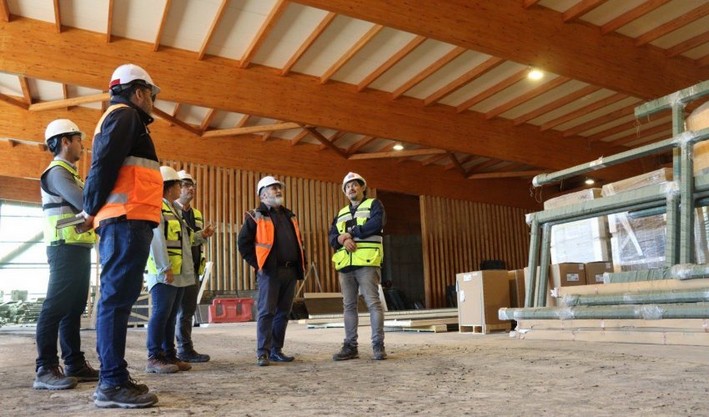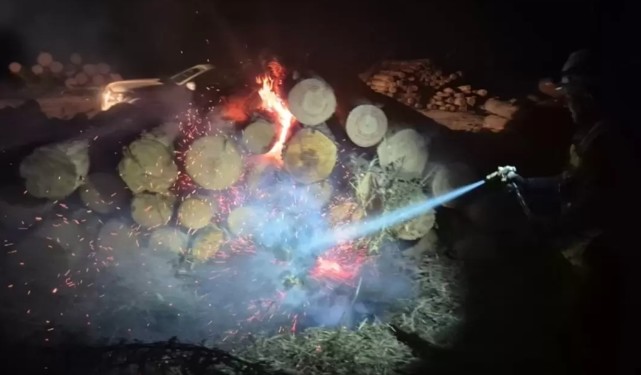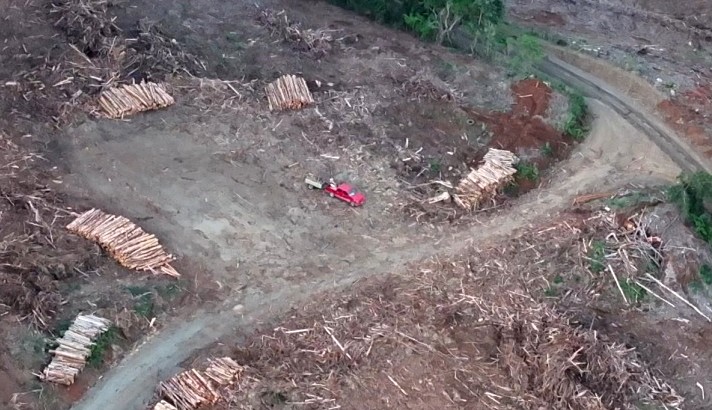MOP Seeks to Promote the Use of Wood in Its Projects
Although cement, iron, and steel were traditionally the main materials used by the Ministry of Public Works (MOP) to build numerous projects in the Region, and wood was practically relegated to the construction or repair of the 900 rural bridges that exist in Biobío, the ministry's perspective is now changing.
Considering the impact that the construction industry has on the environment, the Seremi of Public Works, Hugo Cautivo, stated that multiple benefits of using wood, especially in public buildings, have been identified. These include reducing emissions that harm the environment, increasing resource efficiency and productivity, promoting waste reduction and shorter construction times, and supporting the productive chain of stakeholders in an innovation ecosystem.
Therefore, as Cautivo explained, since last year, along with Corfo and other ministries such as the Ministry of Housing and Urban Development—which, through the industrialization of wooden housing and the Emergency Housing Plan, have contributed to this effort—they have recognized the importance of MOP committing not only to a pillar of sustainable development but also to driving the growth and strengthening of the Region.
The authority stated that they have trained staff from all operational departments, integrating Port Works, Hydraulic Works, Airports, Roadways, and Architecture, which plays a central strategic role in exploring the industrial uses of wood.
Progress
So far, the local Seremi already has concrete examples. For instance, the Directorate of Architecture completed the new Carabineros Training School, inaugurated at the end of May with a budget of $17.5 billion, which featured laminated wood cladding for the gym.
Additionally, it will boost public education, as the future Mocha Island School, which will be made of wood using panels, is already in the design phase by the Directorate of Architecture. All logistical aspects for transporting the prefabricated materials are in place. The investment will be $7 billion, with $5 billion contributed by MOP and $2 billion through the FNDR. Budget allocation for bidding is currently underway.
Furthermore, MOP will replace the Cañete High School, which, according to Cautivo, will also be built with wood. This project will be advanced through the Buen Vivir Plan, in collaboration with the Ministry of Education and mandated by the Regional Government. The educational center will have a budget of approximately $30 billion, with shared funding from the GORE, MOP, and the Municipality of Cañete. The contract award is estimated for November 2025. "These are part of the challenges," he commented.
Among the projects executed by MOP in recent years that incorporated wood are the Biobío Theater, inaugurated in 2018 at an approximate cost of $18 billion, and future projects where wood is the predominant material, such as the Eyheramend Mansion in Los Álamos. The mansion burned down in 2021 while awaiting restoration to become a library; it is currently undergoing design updates and has been submitted to the National Monuments Council for approval. Permitting will follow for project execution.
Bridges
Cautivo recalled that historically, MOP has used wood to build hundreds of rural bridges in the Region, but that use of wood is no longer sufficient.
Therefore, they will begin incorporating the material into much larger projects, such as the Chacabuco Viaduct, currently under construction and 67% complete, which will connect the bridge to the avenue of the same name.
"This will feature wood cladding as part of the signal we want to send—a commitment, I reiterate, to advancing sustainable development in the Region, fostering greater growth, and promoting the industrial use of wood. This is not just a task for the Ministry of Housing but for the entire state, and we want to be part of it," said the Seremi of Public Works.
Preparation
Cautivo affirmed that they want to move beyond the traditional use of wood, enabling SMEs to develop parts and components based on this material—not only in traditional applications like wooden bridge beams but in other types of projects.
"We have this vision of Biobío as a capital region and a logistics industry. We know the Region is the capital of the forestry industry, but we now believe it must transition to becoming the capital of the wood industry. Additionally, given the challenge of reindustrializing the Region with new productive developments, I believe this aligns with that goal."
The regional authority stated that the uses of wood should no longer be traditional.
He added, "For example, not just for bridge pillars or aesthetic purposes like cladding, but also at a more structural level, identifying which parts and components can be used in public works, manufactured, and integrated into a regional productive system to strengthen regional issues."
He acknowledged, however, that there is still a lack of knowledge in the area, which is why they are developing a strategic plan with Corfo and Codesur (Rural Development Corporation), exploring possibilities to use wood cladding in places where steel, iron, or cement were traditionally used, due to its characteristics.
"We want to see which pilot experiences can be further developed, because growth also implies a transformation challenge for many regional SMEs. The industrial use of wood means not only presenting initiatives from a case-by-case or artisanal perspective but enabling companies to manufacture parts and components that can be incorporated into various types of public works. That is the direction we are aiming for with this strategic plan."
During the remainder of President Gabriel Boric's administration, there are no specific budgets for developing projects, he stated, as they are focusing on initial pilot experiences. "It's more about what we can generate in terms of knowledge (…) understanding the materials and their potential uses, as well as training professionals, both ours and in the private sector, which has been part of the tasks we've undertaken with the strategic plan for the industrial use of wood. This will help train people to make greater, more identified, and intensified use of industrial applications."
He emphasized that it is important for SMEs to understand the importance of this change, incorporating technology, design capability, execution, and logistics to engage in the industrial wood processing chain.
"This is something incipient in our case. I reiterate, there is obviously more developed progress in housing and buildings, but we want to get involved because we understand this is the future—from the perspective of regional development and fostering greater industrial growth in the region."
Source:Diario Concepción

















